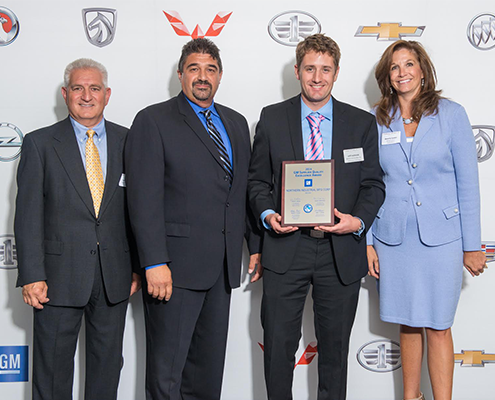Green Innovations: Eco-Friendly Auto Manufacturing
The world of manufacturing is experiencing a seismic shift, thanks to the growing popularity and increasing necessity of green innovation. What was once considered a niche or optional approach is now becoming the standard as manufacturers, industry leaders, and consumers alike recognize the critical importance of adopting sustainable practices. The urgency to mitigate environmental degradation and foster a healthier planet for future generations has spurred an innovative wave in manufacturing, with eco-friendly methods emerging as the new norm.
Green innovation in manufacturing implies the integration of sustainable practices into the production process, ensuring that the manufacturing cycle—from the extraction of raw materials to product disposal—minimizes environmental impact. It involves the adoption of cleaner technologies, energy-efficient systems, recycling and waste reduction strategies, and sustainable supply chain management.
The manufacturing landscape is vast and diverse, and each sector has its unique challenges and opportunities when it comes to green innovation. One such industry that has begun embracing these green methodologies is the production of shims and thrust washers—essential components in various mechanical devices.
Understanding “Green” Thrust Washers and Shims
Before delving into green production methods, it is crucial to understand what thrust washers and shims are. Thrust washers are flat bearings designed to hold the axial load, or the load transmitted along the axis of a shaft. They are often used to prevent movement along the axis and provide smooth surfaces for the moving parts in machinery.
On the other hand, shims are thin pieces of material, often metal, used to fill gaps or spaces between objects, ensuring a better fit or alignment. They are commonly found in a variety of applications, including machinery, electronics, and construction.
Both thrust washers and shims are indispensable in numerous industries, playing an essential role in the functionality of various machinery and equipment. Their widespread use underscores the importance of adopting eco-friendly practices in their production.
What are Shims Used for in Industries?
Shims are versatile components with a wide range of industrial applications, thanks to their ability to deliver precision and reliability. They are primarily used to adjust the space between two objects, helping to achieve a perfect fit and alignment. This makes them an integral part of various mechanical systems and assemblies where precise measurements and alignments are critical.
In the automotive industry, shims are used to adjust suspension geometry and brake caliper alignment, among other uses. They also find application in the electronics sector, where they are used for thermal management in circuit boards. The construction industry uses shims for door and window installations, ensuring a level and secure fit.
Shims also play a crucial role in the energy sector, particularly in power plants and renewable energy systems where they are used to optimize performance and maintain equipment. Thus, the importance of shims extends beyond their immediate function, impacting the efficiency and longevity of the machinery they are part of.
Environmental Impact of Traditional Shim & Thrust Washer Production
The production of shims and thrust washers, like many manufacturing processes, has traditionally had a significant environmental footprint. The extraction of raw materials often involves mining activities, which can cause habitat destruction, water pollution, and greenhouse gas emissions. The manufacturing process itself can be energy-intensive, often relying on fossil fuels and resulting in substantial CO2 emissions.
In addition, the use of harmful substances in the production process, such as heavy metals and chemical solvents, can pose risks to both the environment and human health. Waste generation is another concern, with discarded materials and end-of-life products contributing to landfill waste and potential pollution.
However, the industry is increasingly recognizing these challenges and is now seeking ways to mitigate its environmental impact, leading to the emergence of eco-friendly methods in shim and thrust washer production.
Need for Eco-Friendly Methods in Shim & Thrust Washer Production
The traditional methods of thrust washer and shim production, with their detrimental environmental impacts, are no longer sustainable in the face of increasing environmental concerns and stricter regulations. There is a growing demand from consumers for greener products, and companies are realizing the business benefits of sustainability, including cost savings, improved brand reputation, and increased competitiveness.
Embracing eco-friendly methods in shim and thrust washer production is not only an environmental imperative but also a strategic business decision. It involves a holistic approach, considering every aspect of the production process—from raw material sourcing to waste management—with the aim of minimizing environmental impact.
Adopting green production methods can significantly reduce energy usage, decrease emissions, minimize waste, and eliminate the use of harmful substances. Furthermore, it paves the way for circular economy models, where waste is minimized through recycling and reusing materials, extending the lifespan of products and resources.
Innovative Green Techniques in Shim & Thrust Washer Production
The shift towards green manufacturing in the shim and thrust washer industry is driving the development and adoption of innovative techniques. One such method is the use of eco-friendly materials, such as recycled or bio-based materials, which can reduce the environmental impact associated with raw material extraction.
Energy-efficient production processes are also being implemented, harnessing renewable energy sources such as wind and solar power to replace traditional fossil fuel-based energy. Advanced manufacturing technologies like 3D printing are being explored, which can reduce waste by producing components with precise dimensions, eliminating the need for excess material.
Another green technique involves the implementation of closed-loop systems, where waste materials are recycled back into the production process. This not only reduces waste but also saves on raw material costs. There is also a growing focus on product design, with efforts being made to design shims and thrust washers that are more durable, reusable, or recyclable, contributing to a circular economy model.
Successful Implementation of Eco-Friendly Methods
Several companies in the shim and thrust washer industry have successfully implemented eco-friendly methods in their production processes. For example, some manufacturers have transitioned to using 100% recycled steel in their products, significantly reducing their carbon footprint. Others have invested in energy-efficient machinery and renewable energy sources, reducing their energy consumption and greenhouse gas emissions.
Another notable example is the adoption of lean manufacturing principles, which aim to eliminate waste in all forms. This has led to significant reductions in material waste, improved operational efficiency, and cost savings.
These case studies highlight the potential benefits of embracing green innovation in the shim and thrust washer industry, not only for the environment but also for business performance.
Custom Shims: An Eco-Friendly Approach
Another promising approach in the pursuit of green manufacturing in the shim and thrust washer industry is the production of custom shims. Custom shims are designed and produced to meet the specific requirements of a particular application, ensuring a precise fit and eliminating the need for adjustments or modifications during assembly.
This not only improves the efficiency and performance of the machinery but also has significant environmental benefits. By producing shims to exact specifications, waste is minimized as there is no excess material. Additionally, custom shims can be designed with sustainability in mind, using eco-Future of Green Manufacturing in the Shim and Thrust Washer Industry
The future of the shim and thrust washer industry lies in the continued adoption and advancement of green manufacturing methods. As technology continues to evolve and sustainability becomes an increasingly important factor in business and consumer decisions, the industry is poised to witness further innovations and improvements in green manufacturing.
The potential for advancements in materials science could lead to the development of new, more sustainable materials for shims and thrust washers. The growth of digital technologies and Industry 4.0 could enable more efficient and precise manufacturing processes, reducing waste and energy consumption.
Moreover, the shift towards a circular economy model is expected to continue, with greater emphasis on product lifecycle management, recycling, and the development of take-back schemes for end-of-life products. All these developments signal a promising and sustainable future for the shim and thrust washer industry.
Embracing Green, Eco-Friendly Manufacturing Innovation for a Sustainable Future
The transition towards green innovation in the production of shims and thrust washers is not just a trend—it’s a necessity for a sustainable future. While challenges remain, the benefits of adopting eco-friendly methods are clear, both in terms of environmental impact and business performance.
The journey towards sustainability requires commitment and innovation, but with the right strategies and technologies, manufacturers of shims and thrust washers can significantly reduce their environmental footprint and contribute to a greener, more sustainable world. Embracing green innovation is the way forward for the industry, paving the way for a future where manufacturing and sustainability go hand in hand.
Green Automotive Parts Manufacturing | Michigan
Northern Industrial Manufacturing is your turnkey partner for even the most challenging projects. Our experts understand which options work best for your specific material and surface finish requirements, and offer the most advanced technologies to meet the needs of your unique project.
We will bring your parts to market on time – with assistance from prototype to volume production – quickly, affordably and efficiently as possible.
Thank you for visiting our blog where we keep customers updated and informed on the latest processes in automotive parts manufacturing!
Please check back often if you would like to learn more about the world of precision thrust washers, selective shims, spacers, and other automotive parts.




